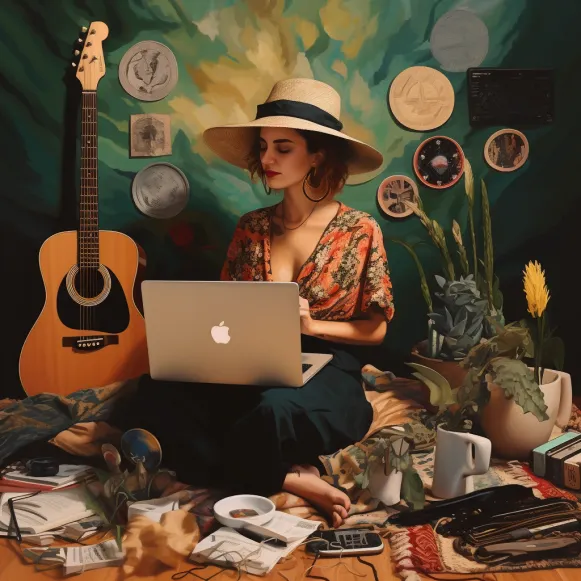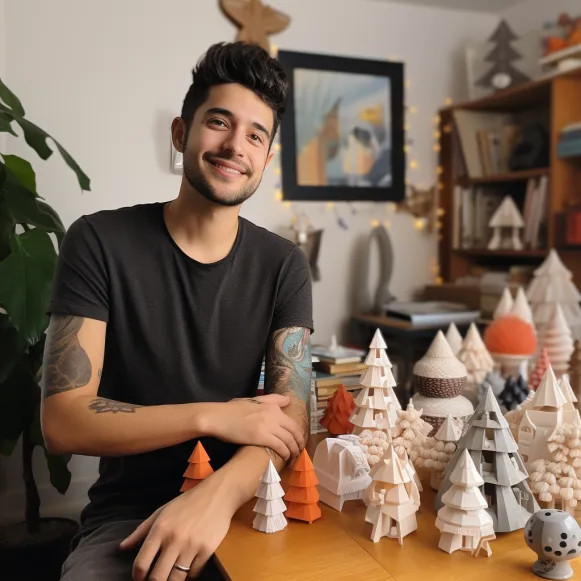Obama Presidential Center museum director aims for history, context

CHICAGO (AP) — The Obama Presidential Center’s tower is drawing a lot of attention as it rises in Jackson Park on Chicago’s South Side. Meanwhile, Louise Bernard is working on the interior of the centerpiece museum, balancing former President Barack Obama’s philosophy and the mission of his namesake foundation with historical accuracy in a time of corrosive partisanship.
While the center’s outer shell has been known (and litigated over) for years, its interiors — and the narrative Obama’s team plans to present across four floors of distinct exhibits — have been largely unknown.
Bernard, a native of the United Kingdom who was appointed museum director in the spring of 2017, is the woman leading that narrative charge.
Bernard said in an exclusive interview that she has struggled with how to approach Obama’s history, as well as the controversies and challenges from his two terms in office, and present them at an institution that critics fear will become another of the presidential “temples of spin” rather than an unbiased reflection of the time.
Among the Obama-era controversies are the rise of drone warfare, occupations of Iraq and Afghanistan, the failure to close Guantánamo Bay, and the more precarious aspects of the landmark Affordable Care Act and Iran nuclear deal.
While the center focuses on the president and Michelle Obama’s “values-based” leadership, Bernard says her team “leaned hard” into using primary source documents to show the Obamas’ thinking at the time they made decisions in the White House. She also stated that historical interpretations are almost certain to shift and evolve over time.
Bernard stated that the museum team attempted to place drones “in the context of the administration’s goals for national security… certainly there was critique from both the left and the right.” The president wanted us to engage in exhibit-making around the complexities of decision-making, differing perspectives, and the idea that work always extends beyond one president or administration.”
“There are things that he simply couldn’t accomplish during his time in office, and he’s very open in acknowledging that and tasking people to continue the work,” she added.
“Obviously, we’re telling the story of a specific president, and no museum ever tells a neutral story.” “There is a specific point of view,” Bernard explained.
However, she claims that the fact-checking and sourcing have been meticulous. “For accuracy, every single word is weighed, every date is checked, every name, and every face in an image is checked.” And, at the end of the day, history is still being written. It is still recent history.”
Bernard is no stranger to large, complex public exhibits that draw a lot of attention.
Bernard, who was previously the director of exhibitions at the New York Public Library, is a “Americanist” with a Ph.D. in African American and American studies from Yale and a master’s degree in English from Indiana University.
She previously worked on the design team for the Smithsonian National Museum of African American History and Culture in Washington, as well as advising on the International Museum of African American History in Charleston, South Carolina.
Bernard claims that she and the president, a Harvard graduate who has been both praised and derided as an intellectual, speak a similar language.
“I come out of a cultural, literary kind of background, academically, and so engaging with a president who is himself a writer, in the best tradition of American letters, is something that sits very well with me,” she went on to say. She is also aware of the “global dynamics of his thinking and how it’s brought to bear on this particular project, even though it’s rooted in Chicago and in this idea of the Black metropolis.”
Bernard stated that the foundation has worked with “a series of subject matter experts,” including presidential historians Doris Kearns Goodwin (author of the Abraham Lincoln biography “Team of Rivals”) and Douglas Brinkley, a Rice University history professor. They are members of a “Storytelling Council” that advises the museum’s narrative.
President Obama, on the other hand, “has been engaged with reading the script, so to speak, the narrative that we tell in the museum, providing feedback but also deferring to other subject matter experts in the field and certainly to the historians who he respects and admires,” Bernard said.
According to foundation spokesperson Courtney Williams, Obama has not vetoed any content.
While Bernard refers to their consultants as a “Team of Rivals,” there are some friendly faces among them: Silver Street Strategies, the museum’s fact-checking firm, was founded by former leaders in the Obama White House’s research department.
Kenneth Mack, another historian on the team, was an Obama classmate at Harvard Law who the president appointed to the Permanent Committee for the Oliver Wendell Holmes Devise, which documents the Supreme Court’s history.
Nikhil Singh, an NYU history professor, has also been tapped to advise on museum content in 2021. He considers himself one of Obama’s more critical voices: For one thing, he believes the former president failed to be as transformative on the foreign policy stage as his supporters hoped and was a “ambivalent figure, in a way” when it came to the policing and mass incarceration issues that sparked the Black Lives Matter movement. He hopes the museum will address this issue.
Singh was not asked to consult on any of the floors directly related to Obama’s presidency, but he did weigh in on the sections dealing with pre-Obama American history, such as the anti-Vietnam War, civil rights, and student movements of the 1960s, “what Obama considers a very formative period for him,” Singh said.
Singh pushed for a greater emphasis on the labor movement at the time, which he said foundation officials were open to.
“Clearly they weren’t afraid to consult broadly, I appreciate that ‘Team of Rivals’ would be Obama’s style,” Singh said in an interview with the Tribune. “I believe he believes in history more than many other American presidents.” Not the canned American history of myth, exceptionalism, and the city on a hill… but a history from below, of ordinary people making history.”
“I believe that’s what they’re attempting with the museum, that he is a product of history, or a set of histories.” That’s intriguing, potentially instructive, and instructive… how it exists in a historical context rather than from on high,” Singh said. “The idea of a history museum is one they took seriously and as a historian, I appreciate that.”
Obama has already abandoned the tradition of privately-funded but publicly-maintained presidential libraries, declining to build a library for the National Archives and Records Administration to house the presidency’s paper records and physical artifacts in 2017. Instead, his private foundation is paying NARA to digitize his presidency’s paper records while also amassing its own collection of artifacts.
Some historians and a former presidential museum director were concerned about the ease of access to information and potential partisanship in storytelling as a result of the break with NARA. Others argued that it was better that complexes known for presidential propaganda were no longer supported by federal taxpayers.
According to a foundation spokesperson, NARA will lend documents and artifacts from Obama’s presidency for the museum’s exhibits. Paper documents for display, gifts from heads of state, objects from state dinners and other White House events, and Mrs. Obama’s clothing are all included.
Interested historians will be able to access information online, as well as at the small Chicago Public Library branch that will be part of the OPC’s campus, according to Bernard.
The lantern-shaped building that will house the museum will be wrapped in text from Obama’s speech commemorating the 50th anniversary of the police attacks on civil rights protesters in Selma, Alabama, known as “Bloody Sunday.”
It’s the first of several references to those “on whose shoulders we stand,” as Bernard put it. “President Obama’s story was only made possible because of the people who went before him,” she said. It was a reflection on “the power of everyday people willing to put their lives on the line for American democracy.”
The museum will be located in the center of the structure. Visitors will begin on the ground floor and ascend through four floors of exhibits before reaching a “sky room” atop the structure, with views of the South Side or the lake and the Museum of Science and Industry visible through the screen.
Between the two will be a private presidential suite where the President and Mrs. Obama will be able to host VIPs, donors, world leaders, and foundation program participants.The building, unlike the Clinton Library, will not include a living space or apartment for the former first family.
The exhibition on the first floor will focus on “Toward a More Perfect Union,” according to Bernard, who was referring to the “building blocks of American democracy that would lead to the election of the nation’s first Black president … the founding contradictions, abolition and reconstruction, the Progressive Era, women’s suffrage, the New Deal, Great Society, and the modern civil rights movement.”
Following that will be “Working for the Common Good,” which will recap the Obama administration over two terms, addressing domestic and foreign policy, “the push and pull of progress,” and “key initiatives that the administration was working through,” according to Bernard.
It will discuss the Great Recession’s aftermath, the Affordable Care Act, Obama’s immigration and education policies, the wars in Iraq and Afghanistan, and Obama’s “vision for foreign policy as it connects to a broader understanding of security and peace,” according to Bernard.
The third level will be a “palate cleanser” called “The People’s House.” It will include a replica of Obama’s Oval Office (which visitors will be able to walk through and touch), as well as other replica White House rooms shrunk down and designed in the style of the Art Institute of Chicago’s Thorne Miniature Rooms.
“We the People,” the final level, picks up “some of the key storytelling around the administration’s work for the common good,” such as tribal, disability, and LGBTQ rights; gender equity; criminal justice and policing reform; science, innovation, and climate change.
The floor also revisits Obama’s farewell speech in Chicago, where he spoke about civic engagement and “passing the baton back to the people to continue the work.”
The concept is “embedded throughout the space,” according to Bernard.
“For people who come to the center and the museum and want to see the replica of the Oval Office and Mrs. Obama’s dresses and learn more about the Affordable Care Act or whatever it is, we want them to think about the change that they can make, no matter how small.” Small radical acts like these really add up to something bigger.”
©2023 Chicago Tribune. Visit at chicagotribune.com. Distributed by Tribune Content Agency, LLC.






